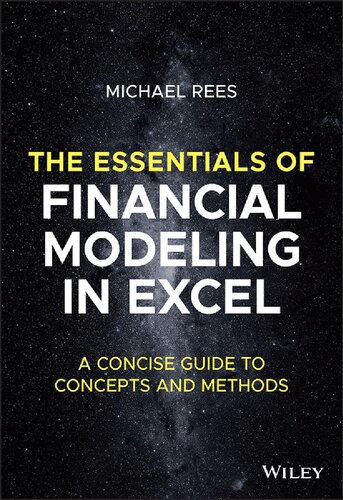(Ebook) The Essentials of Financial Modeling in Excel: A Concise Guide to Concepts and Methods by Michael Rees
This book provides a concise introduction to financial modeling in Excel. It aims to provide readers with a well structured and practical tool kit to learn modeling “from the ground up.” It is unique in that it focuses on theconcepts and structures that are commonly required within Excel models, rather than on Excel per se.Readers will generally obtain the maximum benefit by studying the text from the beginning and working throughit in order. It is intended that the reader builds from scratch the models that are shown, to reinforce the learning experience and to enhance practical skills. Of course, there may be areas which are already familiar to some readers, and which can be skim‐read. Nevertheless, the text is intended to be concise and practical, and to contain information that is potentially useful even to readers who may have some familiarity with the subject.Although the text is focused on the essentials, at various places it briefly highlights some aspects of moreadvanced topics. These are described in Further Topics sections, which are situated at the end of some chapters. These sections can be skipped at the reader's discretion without affecting the comprehension of the subsequent text. Note that another of the author's works (Principles of Financial Modelling: Model Design and Best Practices Using Excel and VBA, John Wiley & Sons, 2018) discusses in detail some topics that are only briefly (or not) covered in this text (notably VBA macros, optimization, circularities, named ranges, and others). For convenience, in the current text this other text is occasionally mentioned at specific places where it contains significant additional materials related to the discussion, and is subsequently referred to as PFM.
*Free conversion of into popular formats such as PDF, DOCX, DOC, AZW, EPUB, and MOBI after payment.


